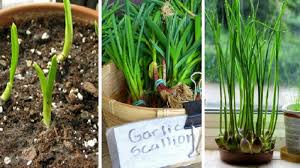What Is cocopeat?
Coconut is more than just a delicious fruit with numerous practical uses. It has several uses, including delightful coconut milk and dazzling moisturizers made of coconut oil.
One item made from the shell of the coconut is called cocopeat. It is incredibly beneficial from an economic standpoint.
Cocopeat, also known as coir dust, coco dust, or coir fiber, is a natural fiber made from the husk of coconuts. It results from the process of removing the fiber from the coconut husk shell.
Before being turned into slabs or blocks, the old mulched dust is gathered, filtered, and dried. It has a high water retention capacity and is a completely organic growing medium.
Read also: How To Grow Green Pepper
It is an antifungal and antibacterial growth medium due to certain biochemical and physical properties. It is ideal for soil mixtures, plants grown in containers, and hydroponics.
It has organic hormones for rooting. These characteristics of cocopeat speed up plant growth.
coco peat advantages
Natural fiber called cocopeat is created from coconut husks. Coco-peat, a 100% natural growing medium, is a byproduct of the extraction of coconut fiber from the husks. This naturally sun-dried cocopeat is processed to create a variety of products, including cocopeat blocks, cocopeat briquettes, cocopeat tablets, etc.
- Coco soil is another name for loose coco peat. Coco soil is a great hydroponic growing media since it is a porous, well-drained medium that aids in the development of strong roots in the plant.
- Cocopeat has the following qualities: it is lightweight, manageable, and even reusable for up to four years.
- Cocopeat is resistant to bacterial and fungal development because of its physical and biochemical characteristics.
- Cocopeat deteriorates gradually. It offers long-term advantages because it doesn’t start to degrade until it is ten years old.
Its pH ranges from 5.2 to 6.8, which range from neutral to somewhat acidic. Because of this, it works well when combined with alkaline garden soil. Read about the impact of soil pH on plant growth. - For lengthy periods of time, cocopeat can store and deliver nutrients to plants.
It has excellent oxygenation qualities, which are crucial for the growth of strong roots. - Any common materials, such as soil and manure, can be combined with cocopeat to create a blend or a standalone product.
For a high-quality product with a sustainable future for the environment, cocopeat is offered at a reasonable price.
The ideal soil conditioner, cocopeat can hold up to eight times its volume in moisture. It’s perfectly natural. - The texture of cocopeat is constant, homogenous, and manageable. It does not form any mud, in contrast to dirt.
To assist you with gardening, we have a comprehensive reference on coco coir pots and their purposes.
Where is cocopeat used?
- Fantastic as a sowing medium is cocopeat. In seedling trays, it is used to plant the seeds of seasonal flowers and vegetables.
- A excellent rooting medium is cocopeat. For root induction, stem cuttings are placed in the cocopeat.
Hydroponic farming and soilless gardening both benefit greatly from cocopeat. - Cocopeat is a crucial component of many potting media, including organic veggie-mix and pot-o-mix.
For indoor plants, cactus and succulents, dish gardens, terrariums, and hanging baskets, potting mixture with extra cocopeat is appropriate.
coir-peat soil
How can I create quality coco soil at home?
Purchase a block of coco-brick in gardenia.
Place a compacted chunk of coco-peat in a large bucket of water.
To ensure that the block absorbs the most water and loosens up, keep it submerged in water for 3–4 hours.
The entire block will start to absorb water after 3–4 hours, swelling to 2-3 times its original size.
You can utilize the soft, fluffy, and light coco soil after just draining the extra water.
Peat block coco



